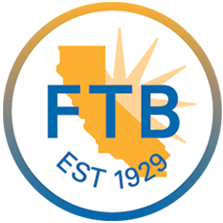
A sole proprietorship is the simplest and most common form of business structure. However, when tax season arrives, sole proprietors must understand their obligations and how to properly file their taxes to avoid penalties and maximize deductions. In this mini guide, we provide an overview of sole proprietorship taxes, covering everything from tax rates to deductions and filing requirements.
Understanding Sole Proprietorship Taxes
Since a sole proprietorship is not considered a separate legal entity from its owner, the business income is reported on the owner’s personal tax return. This means sole proprietors must pay taxes on business earnings as part of their individual income tax filings.
1. Self-Employment Tax
One of the key tax obligations for sole proprietors is the self-employment tax, which covers Social Security and Medicare taxes. As of 2024, the self-employment tax rate is 15.3%, consisting of:
- 12.4% for Social Security
- 2.9% for Medicare
Sole proprietors must pay this tax if their net earnings exceed $400 in a given tax year.
2. Income Tax
Sole proprietors report business income and expenses on Schedule C (Form 1040). Net profit from the business is then included in the individual’s total taxable income and taxed at the applicable federal income tax rates, which vary based on the tax bracket.
3. Estimated Quarterly Taxes
Unlike traditional employees, who have taxes withheld from their paychecks, sole proprietors must make estimated quarterly tax payments if they expect to owe at least $1,000 in taxes for the year. These payments are typically due on:
- April 15
- June 15
- September 15
- January 15 of the following year
4. State and Local Taxes
Depending on the state, sole proprietors may also be subject to additional income taxes, sales taxes, or business-related taxes. It is essential to check state and local tax regulations to remain compliant.
Tax Deductions for Sole Proprietors
One of the advantages of operating as a sole proprietorship is the ability to deduct business expenses. Common deductions include:
- Home Office Deduction – If you use a portion of your home exclusively for business, you may qualify for a deduction.
- Vehicle Expenses – If you use your car for business purposes, you can deduct mileage or actual expenses.
- Supplies and Equipment – Expenses related to office supplies, software, and business equipment are deductible.
- Marketing and Advertising – Costs associated with promoting your business, such as website fees and online ads, can be written off.
- Health Insurance Premiums – Sole proprietors may deduct the cost of health insurance for themselves and their families.
- Retirement Contributions – Contributions to a SEP-IRA or solo 401(k) can reduce taxable income.
How to File Sole Proprietorship Taxes
Filing taxes as a sole proprietor involves several steps:
- Gather Financial Records – Maintain accurate records of income, expenses, and receipts throughout the year.
- Complete Schedule C – Report business revenue, expenses, and net profit.
- Calculate Self-Employment Tax – Use Schedule SE to determine self-employment tax liability.
- Report on Form 1040 – Include Schedule C net income on your personal tax return.
- Pay Estimated Taxes – Ensure timely estimated tax payments to avoid penalties.
Conclusion
Understanding sole proprietorship taxes is crucial for staying compliant and optimizing tax savings. By keeping accurate records, taking advantage of deductions, and making timely tax payments, sole proprietors can efficiently manage their tax obligations while focusing on growing their business.
Looking for an even more hands-off tax solution? The tax professionals at The Ray Group can file your taxes for you and advise you on tax-cutting actions you can take.







